5 Common Form Mistakes Experts See In HIIT Classes
Are you performing these HIIT exercises correctly? Watch below to find out.
According to American College of Sports Medicine, high intensity interval training has ranked in the top three worldwide fitness trends every year since 2014. In Chicago, Orange Theory Fitness and Crosstown Fitness are two popular options for high intensity interval training (HIIT) classes. At FFC, HIIT classes have increased in popularity year over year as well. With over 500 group fitness classes scheduled each week across our 11 locations, you can choose from a variety of HIIT class formats for a quick and effective workout at FFC.
In a HIIT workout, you perform bouts of high-intensity exercises to raise your heart rate to around 90% of your maximum heart rate before taking a recovery. HIIT classes can last up to an hour, and as our bodies fatigue during classes, our form may suffer, which can exacerbate aches and pains and potentially lead to injury.
Related: Interested in the science behind HIIT?
To help keep you healthy and ready for class, we asked FFC Director of Group Fitness Lois Miller to identify the most common form mistakes she sees in HIIT exercises performed in FFC group fitness classes.
Burpees:
Whether you love them or hate them, burpees are an awesome total-body cardio move. To properly perform a burpee, start with a deep squat to lower the body toward the floor as the torso stays upright. Avoid bending at the waist to place hands on the floor. At the bottom of the squat, your legs will kick back to a full plank.
You have the option to lower into a push-up from plank position, but be careful not to bounce your chest off the ground as an alternative. To finish the move, hop feet forward toward your hands and land in a squat before ending with a vertical jump.
Burpees are a staple in FFC group fitness classes like Motiv8. This high intensity training workout is designed to increase aerobic and anaerobic capacity, enhance power production and develop overall strength. Short 20-second intervals at your “max” are followed by a 10-second rest, which is repeated for 8 total rounds. Six exercises per class are completed for an overall total body fat-burning workout.

Jump Squats:
Jump squats are another great exercise to ramp up your heart rate in a HIIT workout. A correct jump squat starts in a bent knee position. This explosive move powers through the low body, extending through the knees and hips, followed by a soft landing, again loading through the low body. Avoid locking out your knees and hips throughout this exercise.
You’ll find jump squats as part of the programming in FFC classes like Total Body Blast. Total Body Blast utilizes medium weights and combines cardio, strength and core exercises into one dynamic session.
Related: Ready to give HIIT a try? Check out this HIIT workout.
Lateral Shuffles:
The lateral shuffle is a great way to incorporate that side-to-side movement that is often missing in exercise and training programs. Contender, our boxing conditioning class, often utilizes lateral shuffles as a total-body HIIT exercise. In Contender, you’ll perform easy to follow 3 minute boxing combinations on the bag combined with compound strength exercises to maximize heart rate and improve coordination.
In a correct lateral shuffle, the hips and shoulders should be stacked and the knees should be bent to provide a low center of gravity. Twisting the torso and creating a high center of gravity should be avoided for proper execution.
One of the important things to remember is, as we fatigue in our classes, your performance level is going to have a tendency to drop. So, if you are in any of our high intensity interval training classes, and you need to take a break, take it.
Lois Miller
High Knees:
High knees are often used as part of a warm-up or as a cardio burst in classes like Formula 94. This calorie-torching format is performed barefoot in a 94-degree studio with 40% humidity. The use of light to moderate hand weights will help you incinerate body fat as you tone and define your body from head to toe.
The next time your instructor calls for high knees, remember these tips for proper form:
In a correct high knees position, the torso should remain upright (almost like you are slightly leaning back). Avoid rounding your shoulders. Your lower body should have a slight posterior pelvic tilt and the abdominal wall should be pulled in, drawing the knees up.
Weighted Swings:
Weighted swings, performed either with a kettlebell or dumbbells, are a big part of our classes on the turf, called The Faction. The Faction is where you go for serious workouts: expert instructors keep sessions fresh and exciting with all the latest types of programming, while fitness testing allows you to keep track of your progress.
Take your next workout to the turf and perform the perfect weighted swing:
A proper swing is a hip-dominant exercise, not knee- or arm-dominated. It is key to engage the core, breathe through the work and avoid bringing the weight overhead. The most common mistake is squatting with the weight and using the arms to raise the weight, instead of the proper form of hinging at the hips and letting momentum propel the weight forward.

Ready To Take A HIIT Class?
As an FFC member, you have access to all kinds of group fitness classes with one membership. Get your heart pumping with one of FFC’s HIIT classes mentioned in this article – Motiv8, Total Body Blast, The Faction, Contender and Formula94 – plus many more!
Head to our FFC Group Fitness page to read class descriptions, see the schedule and plan your next workout today!
Not an FFC member yet? No problem! You can try any of our class offerings free with a one-day trial!
Read Full Video Transcript Below
Lois Miller:
Hello Chicago, I am Lois Miller, Group Fitness Director for Fitness Formula Clubs, and we are at our Union Station location today. I am here with Becca Faria. She is one of our exclusive group fitness instructors and today we are going to take you through some of the most common exercises that you see in high intensity interval training classes, and we’re also going to walk you through some of the most common form mistakes that a lot of us make. Are you ready to go?
Becca Faria:
Ready to go.
Lois Miller:
Alright, so five of our exercises: the first one’s going to be a burpee, then we’re going to go into jump squats, then we’re going to go into a lateral shuffle. Then we’re going to follow that up with high knees and then we’re going to round it out with weighted swings, an exercise that you would actually perform with dumbbells.
Becca Faria:
Mm-hmm (affirmative).
Lois Miller:
Alright, so here we go, everybody. The burpee: so the burpee is such a wonderful exercise that we love to choose. It is so popular with group fitness instructors and trainers because it is a total body exercise, and with high intensity interval training, we want to pick exercises that are going to ramp that heart rate up quickly, and as you can see, the burpee is one of them. So, one of the things we want you to really focus on, and Becca is doing it wonderfully, is when you go down and hit the floor, you are actually doing a deep knee squat as opposed to just bending over and hitting the floor. Show us that Becca, how we don’t want you to do it. The actual bending over to reach for the floor. There you go, you don’t want that heart rate to drop. We actually want your hips to drop, Becca, if you could turn to the side too, so we can see that side view.
Lois Miller:
So she is jumping up, she’s doing a deep knee squat to hit the floor, hands are about shoulder width apart and she’s kipping those heels back. And if you want, you can add to push up like she’s doing on the end. How you doing there? Nice job. Come on, out of it. So Becca, when do you normally like to do a burpee, what kind of classes are you teaching that you’d like to add that in?
Becca Faria:
Definitely in our Motiv8 class.
Lois Miller:
Yes, Motiv8, which is our form of Tabata. It’s 20 seconds on, 10 seconds off, eight rounds of that, and then you move onto the next exercise. What else? Loaded, we’d added a-
Becca Faria:
Total Body Blast.
Lois Miller:
Total Body Blast. Sometimes we’ll add some of these exercises in our Chisel classes as well, which is all about muscular endurance. Nice job on that.
Becca Faria:
Mm-hmm (affirmative).
Lois Miller:
Feeling good?
Becca Faria:
So good.
Lois Miller:
Alright, so let’s move on. So, the next one is a jump squat. Beautiful thing about a jump squat, too, is it’s going to quickly elevate that heart rate. So the way Becca’s doing it here, her feet are about a hip width apart, maybe even a little bit wider, and she’s using the arms to thrust her body up. The thing you want to focus on with the jump squat is a soft landing. One of the big cues that we will give you is load – explode, so you’re loading at the bottom end and then you’re exploding and you’re pushing through those heels. It’s really a great way to elevate that heart rate and it’s fantastic for glutes, hamstrings, quads. Nice job on that, Becca. Well done. One of the things that we don’t want you to do on that jump squat, is we don’t want you to lock your knees out. We’ll see that when people start to fatigue, they’ll do the jump, they’ll lock their knees out and then hit the squat. We want that to be one big fluid exercise. Nice job.
Becca Faria:
Thank you.
Lois Miller:
Are you ready to move on?
Becca Faria:
Ready.
Lois Miller:
Alright, so the next one we’re going to do is a lateral shuffle. I’m going to move out of your way a little bit so you can do that lateral shuffle. It’s just shuffling to one side of your body, tapping the floor, and then shuffling over to the other side. The bigger the space that you have to utilize this exercise, the better. You really, again, want that heart rate to come up, so any exercise where you’re going to be up and then back down again, is it really going to gas that heart rate, it’s exactly what we want. Again, you can see that Becca is keeping her chest lifted but she’s dropping her hips and that is the correct form. One of the important things to remember is, as we fatigue in our classes, your performance level is going to have a tendency to drop. So, if you are in any of our high intensity interval training classes, if you need to take a break, take it and if you have any type of options that you would prefer, just let your instructor know ahead of time. Nice job.
Becca Faria:
Thank you.
Lois Miller:
Alright, we got two more to go, are you ready?
Becca Faria:
I’m ready.
Lois Miller:
Alright, so our fourth one is going to be the high knees, so Becca’s going to show it to you from two profiles. She’s going to show you face on; so with high knees, really driving the arms and bringing those knees up towards your chest, you want to feel like you’re leaning back. Turn to the side back and show us what we don’t want to do. Leaning forward or letting your hips stick out is what we don’t want to see. If you need a modification, you can just bring the knees up and take the jump out of it altogether. Nice job, good work. That’s why we have her doing all of the work because she’s in such stellar shape. Are you ready for our last one?
Lois Miller:
Alright everyone, our fifth and final exercise for you today is the weighted swing. It’s otherwise known as a kettlebell swing, but because we’re doing this in our group fitness classes, we refer to it as a weighted swing, but your technique is going to be exactly the same. So, Becca’s going to show you two different types of swings you can do here. In terms of your technique, you want to drop your body, your torso should be about parallel to the floor, and then you’re going to drive your hips through. So we want to remember, this is primarily a low body, hip thruster exercise, very little upper body at all. Becca, go ahead and turn to the side and show them that swing from the side.
Lois Miller:
So as you can see, her hips are shooting back, but she’s keeping her chest tall. She’s driving her hips through. The important thing to remember here is this exercise is predominantly thrusting your hips, very little upper body at all, so as you fatigue you could either drop down to one dumbbell or do the exercise with no dumbbells at all. Nice job, Becca.
Becca Faria:
Thank you.
Lois Miller:
Alright everyone, I am Lois Miller with Fitness Formula Clubs. Thank you so much, Becca, for joining me with our five exercises– our most common exercises that group fitness instructors like to select when we’re performing our high intensity interval training classes. It doesn’t matter if you’re on the turf doing Faction, you could be doing Loaded, which is a pyramid style class that we have on our schedules, one of my favorites by the way. We’ve got Motiv8, which is Tabata training. We also have Total Body Blast and even in Formula 94 and Chisel, you can see any one of these five exercises. Nice job Chicago, thank you so much. Go online to ffc.com and select any of our class schedules and you can see where to find us next. Thank you so much for joining us.
Post written by Natalie Casper, with expert advice by FFC Group Fitness Director Lois Miller and FFC Exclusive Group Fitness Instructor Becca Faria.


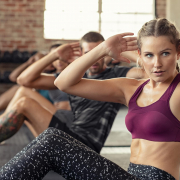
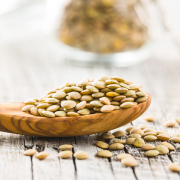




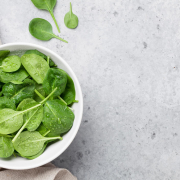
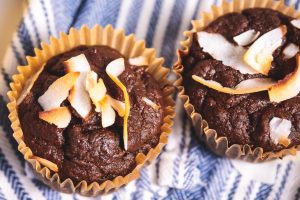
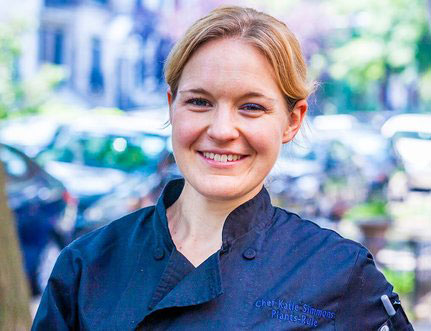 More about Katie: Katie is a group fitness instructor at FFC and is also a personal chef based in Chicago. She specializes in creating delicious, healthy recipes for those with special dietary concerns like gluten-free, oil-free, plant-based, and low-residue. You can see more at
More about Katie: Katie is a group fitness instructor at FFC and is also a personal chef based in Chicago. She specializes in creating delicious, healthy recipes for those with special dietary concerns like gluten-free, oil-free, plant-based, and low-residue. You can see more at 


